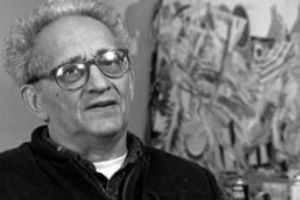
Talk
Frank Stella
Talk with the US-American artist
and Dr. Franz-Joachim Verspohl, professor for art history at the University of Jena
Welcoming speech: Prof. Dr. Joachim Sartorius

Frank Stella © Promo
The American Frank Stella, born in 1936, is one of the most significant artists of our time. At the young age of 23 he showed his “Black Paintings”, which have since come to be seen as having initiated minimalism, in the legendary exhibition “Sixteen Americans“ in the New York Museum of Modern Art. Since then Stella has again and again provoked further crucial shifts in the fine arts. His untiring artistic radicalism probes the limits of painting, exploring transitions from the painted canvas to the three-dimensional sculpture – as in the “Hudson River Valley” series that was shown in Jena – and even to architectural design, as in his work for museums in Groningen, Buenos Aires and Dresden.
Frank Stella has received numerous international awards and prizes, and his artistic eminence is evidenced by two individual retrospective shows at the MoMA in New York, in 1970 and 1987, an honour that no other living artist has received. He held the Charles Eliot Norton Lectures at Harvard University (published in 1986 under the title Working Space) and has made his name as a brilliant and provocative theorist, whose compelling observations are characterized by wide-ranging knowledge and a high degree of political awareness. Stella’s approach to the autonomous space of art is particularly challenging, for here he posits an alternative to simplistic models of representation: “What you see is what you see.”
